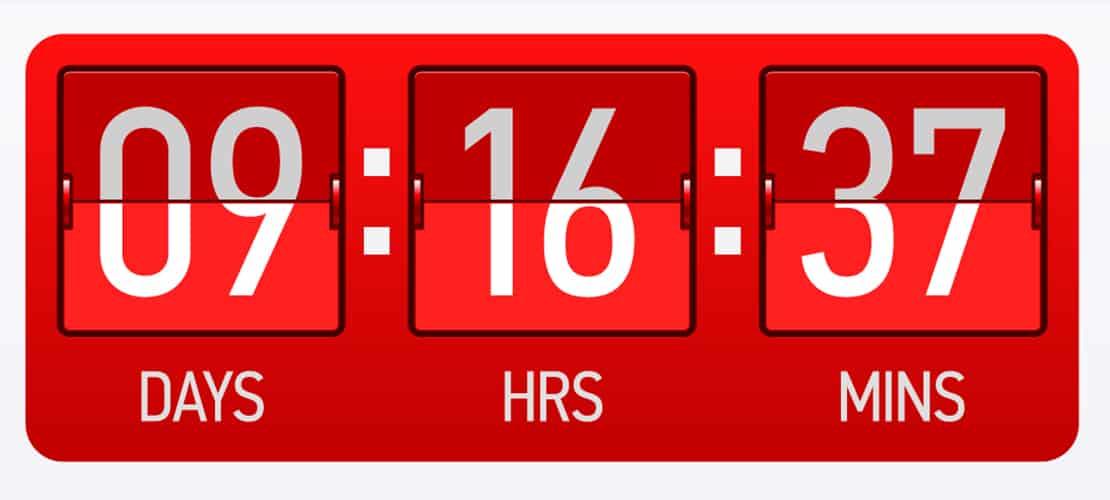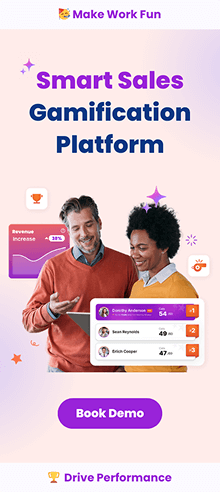This is the time of the year when people traditionally write down their list of new year resolutions. For me some of these goals are personal and usually involve, exercising more, eating less, and being present with family and friends. Fast Start in 2025!
I also set out goals for the workplace. I feel that the team arrived at Xmas tired and weary from a huge year of developing new products and taking them to market. I’m hoping that they will be back at their desks in 2025 refreshed and ready for a year I suspect will be no less stressful, eventful, and satisfying as 2024. My aim is to make the workplace fun and I’ve always ensured that the office has a breakout area where people can play games (video, pinball, and air hockey) and there is a quiet area where people can congregate over lunch or chill out in a beanbag or two.
We believe in gamifying our workplace and that includes our work activities in 2025. While the competition may not be as fierce as in some companies there is definitely an impetus and an increase in the drive of team members to complete tasks and activities. There are also rewards particularly at the team level which encourages collegiate and collaborative behaviors in the team. In the words of an African tribal quote “If you want to go fast, go alone. If you want to go far take the team.”
Clearly communicating the company’s core values is essential, especially during periods of growth.
Understanding Fast Start 2025
A “Fast Start” refers to the strategic initiatives implemented at the beginning of a fiscal year to accelerate performance and set the tone for sustained success. In 2025, this concept has gained significant importance as companies navigate a rapidly changing environment, marked by technological advancements and shifting market dynamics. A robust Fast Start strategy enables organizations to capitalize on early opportunities, align teams with organizational objectives, and build momentum that carries through the year by fostering a positive organization’s culture.
Driving Success with Spinify’s AI Coaching Agent
As we approach 2025, the business landscape continues to evolve at an unprecedented pace. Organizations are seeking innovative strategies to ensure a strong start to the year, aiming to boost performance, foster a positive company’s culture, enhance team engagement, and achieve ambitious goals. At Spinify, we understand these challenges and are committed to providing solutions that empower teams to excel. Our AI Coaching Agent stands at the forefront of this commitment, offering a transformative approach to performance coaching.
The Role of AI in Modern Performance Coaching
Artificial Intelligence (AI) has revolutionized various aspects of business operations, and performance coaching is no exception. AI-driven coaching tools analyze vast amounts of data to provide personalized insights, identify areas for improvement, and deliver actionable recommendations. This data-driven approach ensures that coaching is tailored to individual needs, fostering continuous development and enhancing overall team performance.
Introducing Spinify’s AI Coaching Agent
At Spinify, we have harnessed the power of AI to develop our AI Coaching Agent—a cutting-edge tool designed to automate and elevate the coaching process. By leveraging real-time performance data, our AI Coaching Agent delivers customized coaching sessions for each team member, providing feedback that is both actionable and tailored to individual needs. This personalized approach ensures that every team member receives the guidance necessary to excel in their roles.
Key Features of Spinify’s AI Coaching Agent
- Personalized Coaching: Delivers targeted feedback based on each individual’s performance metrics, ensuring relevance and effectiveness.
- Real-Time Insights: Analyzes current data to provide up-to-date coaching, allowing for immediate application and improvement.
- Scalability: Supports teams of all sizes, ensuring consistent and effective coaching across the organization.
- Wellness Monitoring: Tracks emotional well-being to maintain high levels of engagement and prevent burnout.
Benefits of Implementing Spinify’s AI Coaching Agent for Fast Start 2025
- Accelerated Onboarding: New team members receive immediate, personalized coaching, reducing ramp-up time and enabling them to contribute effectively from the outset.
- Enhanced Performance: Continuous, tailored coaching helps individuals identify and address areas for improvement, leading to sustained performance gains and improved employee retention.
- Increased Engagement: Personalized feedback and recognition foster a culture of engagement, motivating team members to achieve their best.
- Time Efficiency for Managers: Automating routine coaching tasks allows managers to focus on strategic initiatives, optimizing resource allocation.
Integrating Spinify’s AI Coaching Agent into Your Fast Start Strategy for Employee Engagement
To maximize the benefits of our AI Coaching Agent, consider the following steps:
- Align with Organizational Goals: Ensure that the coaching objectives are in sync with the company’s strategic priorities for 2025.
- Customize Coaching Parameters: Tailor the AI Coaching Agent’s settings to reflect the unique needs and goals of your team.
- Monitor and Adjust: Regularly review coaching outcomes and make necessary adjustments to maintain alignment with desired performance levels.
Enhancing Positive Workplace Culture in 2025
To further enhance our positive work culture, we’re introducing new initiatives focused on employee recognition and professional development. We believe that recognizing individual and team achievements is crucial for fostering a sense of belonging and mutual respect within our organization. By implementing an employee recognition program, we aim to make our employees feel valued and appreciated, which in turn will boost employee satisfaction and retention.
Additionally, we are expanding our mentorship programs and providing more opportunities for professional development. This will not only help our employees grow in their roles but also align with our company’s core values of continuous learning and improvement. Flexible hours and open communication channels are also being prioritized to ensure that our employees feel connected and empowered to share their ideas.

By adding gamification elements to our work processes, we aim to increase engagement and motivation among our team members. This gamification strategy involves using game design elements and mechanics, such as receiving points and rewards, to encourage engagement and achieve our business goals. The integration of these effective gamification techniques will create a positive work environment where employees are driven to succeed and contribute to our organization’s success.
In summary, our Fast Start in 2025 is not just about setting goals but creating a thriving company culture that supports our employees’ well-being and development. By fostering a positive culture and leveraging gamification strategies, we are confident that our team will achieve great success in the coming year.
Understanding Workplace Culture
Company’s culture is the heartbeat of any organization. It encompasses the shared values, beliefs, attitudes, and practices that guide how employees interact and approach their work. Think of it as the company’s personality, influencing everything from daily operations to long-term strategies. A well-defined workplace culture aligns these expectations with the company’s overall mission, playing a crucial role in its success.
A positive workplace culture is built on trust, respect, and open communication. It’s an environment where employees feel valued, supported, and empowered to perform at their best. When employees feel this way, they are more likely to be engaged, productive, and loyal to the company. Conversely, a toxic workplace culture, characterized by negativity, gossip, and a lack of respect, can lead to high turnover rates, low morale, and decreased productivity. Therefore, fostering a positive workplace culture is not just beneficial but essential for any organization aiming for long-term success.

Definition of Workplace Culture
Workplace culture refers to the shared set of values, beliefs, attitudes, and practices that guide employee interactions at all levels of an organization. It encompasses the unwritten rules, norms, and expectations that shape the behavior and actions of employees, influencing everything from communication and collaboration to decision-making and problem-solving. A well-defined workplace culture ties these expectations to a company’s overall mission, vision, and values, creating a unique and distinctive work environment.
Importance of Workplace Culture
Workplace culture plays a vital role in shaping the employee experience, driving business success, and fostering a positive work environment. A positive workplace culture can boost employee engagement, productivity, and retention, while a toxic culture can lead to high turnover, decreased morale, and reduced job satisfaction. Research shows that companies with positive workplace cultures have higher average annual returns, healthier and happier employees, and are more likely to attract and retain top talent.
Building a Positive Workplace Culture
Creating a positive workplace culture requires intentional effort and a commitment to meaningful change. It begins with clearly defining the company’s core values and mission, and then developing policies and practices that support these principles. This might include implementing employee recognition programs, offering flexible work arrangements, and providing ample opportunities for professional development.

Leaders play a pivotal role in this process. They must embody the behaviors they wish to see in their employees and cultivate an environment where open communication and feedback are encouraged. Regular town hall meetings, feedback sessions, and an approachable demeanor can significantly contribute to a positive workplace culture. When employees feel comfortable sharing their ideas and feedback, it fosters a sense of belonging and mutual respect, which are cornerstones of a positive work environment.
Establish Core Values
Establishing core values is a crucial step in creating a positive workplace culture. Core values should be concise, clear, and reflect the company’s current culture and long-term goals. They should be developed in collaboration with leadership, long-term employees, and HR representatives to ensure everyone is aligned and committed to upholding them. Core values serve as the foundation of everything that happens at the organization, guiding decision-making, behavior, and interactions among employees.
Set Clear Departmental Goals
Setting clear departmental goals is essential for guiding individual performance, encouraging collaboration, and aligning employees with the organization’s broader objectives. Departmental goals should be specific, measurable, achievable, relevant, and time-bound (SMART), providing a clear direction for employees to work towards. Regular feedback and adjustments to quotas and KPIs should be encouraged to ensure goals remain relevant and achievable.
Communicate the Organization’s Broader Goals
Communicating the organization’s broader goals is critical for cultivating a sense of professional purpose and motivation among employees. Every employee should be clear on the organization’s long-term objectives, understanding how their individual contributions fit into the bigger picture. This can be achieved through regular town hall meetings, company-wide updates, and transparent communication from leadership.
Foster a Sense of Belonging and Inclusivity
Fostering a sense of belonging and inclusivity is essential for creating a positive workplace culture. This can be achieved by promoting diversity and inclusion, encouraging open communication, and celebrating employees’ differences. A sense of belonging is critical for employee engagement, motivation, and job satisfaction, as employees feel valued, respected, and connected to their colleagues and the organization.
Leadership’s Role in Shaping Culture
Leaders are the architects of an organization’s culture. They set the tone and influence the behavior of their employees. An approachable, transparent, and empowering leader can cultivate a positive workplace culture, while an autocratic and dismissive leader can create a toxic environment.
To shape a positive workplace culture, leaders must model the behaviors they expect from their team. This includes communicating the company’s values and mission clearly and consistently, and developing policies that reinforce these values. Recognizing and rewarding employees who embody the company’s culture is also crucial. By holding employees accountable and celebrating those who contribute positively, leaders can foster a culture of excellence and mutual respect.
As we embark on 2025, setting a strong foundation is crucial for achieving organizational success. Spinify’s AI Coaching Agent offers a powerful solution to enhance performance coaching, drive team engagement, and ensure a fast start to the year. By integrating this innovative tool into your strategy, you position your organization to navigate the complexities of the modern business environment with confidence and agility.
In conclusion, a Fast Start in 2025 is about more than just setting goals; it’s about creating a thriving company culture that supports employee well-being and development. By understanding the importance of workplace culture, building a positive environment, and recognizing the critical role of leadership, we can ensure a successful and fulfilling year ahead.
Check out our social media pages for Spinify news and updates: LinkedIn & Twitter




